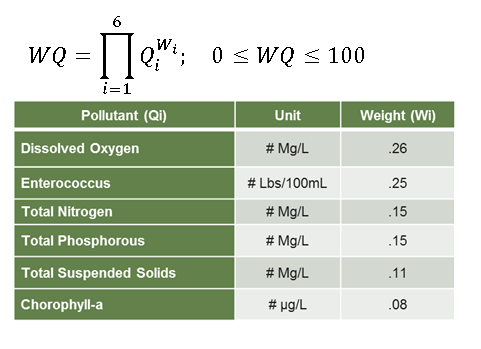Introduction | Methodology | Scenarios | Results


This study develops a spatially-explicit Integrated Assessment Model (IAM) (Figure 1) in order to evaluate willingness-to-pay (WTP) for changes in six dimensions of estuarine water quality (see Figure 2) that link back to point and non-point source pollution in the upstream watershed. We use the model to evaluate changes in human well-being related to recreational activities and non-use from heuristic and stakeholder-driven policy scenarios.
The IAM estimates WTP using a benefit transfer function, which is an approach to valuation that uses estimates of WTP for water quality derived from surveys conducted in other regions, and translates them to a new study site. The function adjusts for many key local context variables, like income and the existence of other recreation substitutes, and has been tested widely in the context of water quality.
The function employs a water quality index (WQI) as a predictor of WTP that integrates multiple key attributes of water quality into a single measure on a 0 – 100 scale. Each water quality attribute is modeled spatially by characterizing its physical transport and fate as a function of watershed characteristics and information about non-point and point source factors, including wastewater treatment facilities, onsite water treatment systems, and dams.
